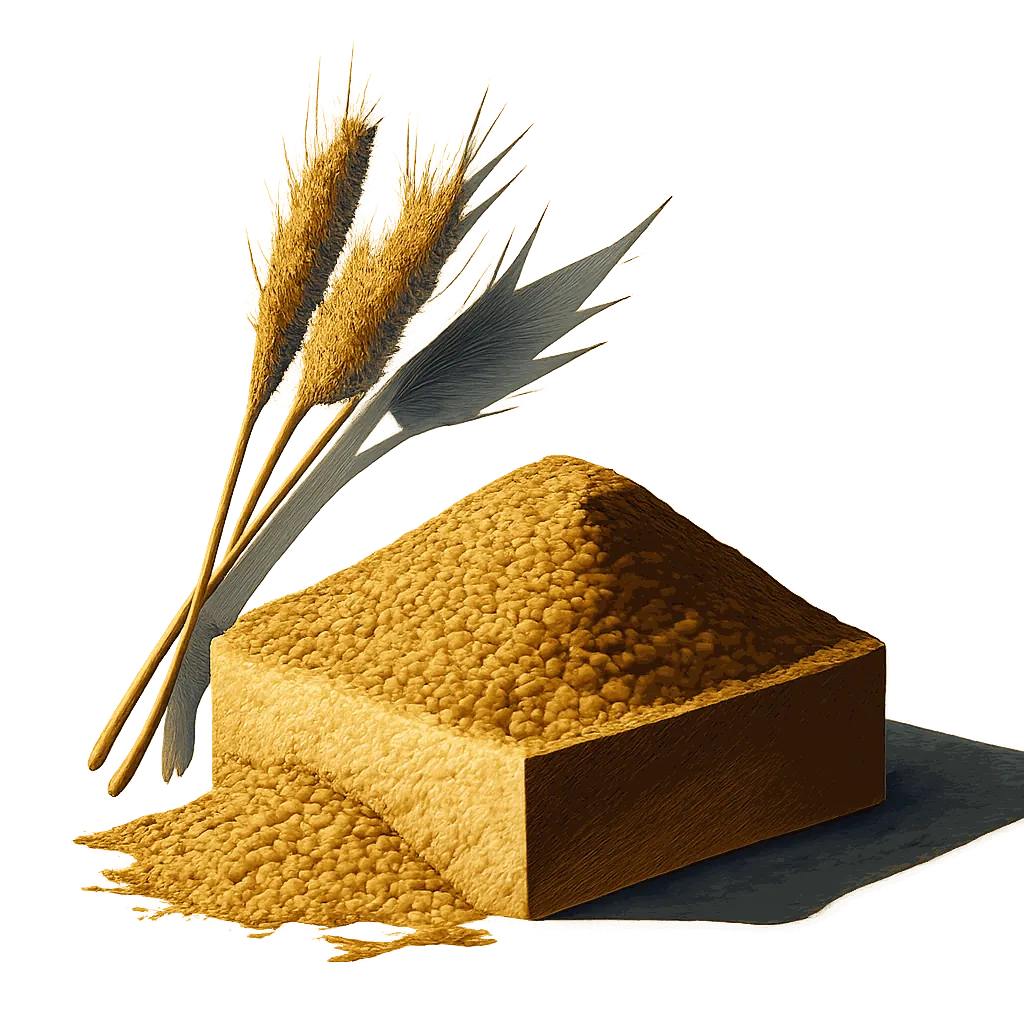Perfect Pairings & Recipes for
Rose Petal

Discover the best flavour pairings for rose petal based on data analysis of thousands of recipes. Find perfect ingredient matches & delicious recipes.
Rose petal immediately conjures the embrace of rose and the kiss of blossom, but beneath its sweetness lies a complex symphony of subtle flavour notes, such as honey, lychee, and hints of violet, contributing remarkable depth. Understanding how these layered flavours work together is the secret to unlocking rose petal's pairing potential.
To illuminate these harmonies, we embarked on an ambitious journey, analysing thousands of ingredients. Each was meticulously deconstructed across 150 distinct flavour dimensions, allowing us to pinpoint precisely which notes complement in both classic and unexpected ways. Our exploration reveals, for instance, how the earthy, chalky calcium sulfate in bicarbonate of soda can ground rose petal, and how tonka bean's vespertine notes forge a beautiful synergy with its rich floral aroma.
Flavour Profile Of Rose Petal Across 150 Dimensions Of Flavour
Flavour wheel chart showing the dominant flavour notes of Rose petal: Rose, Blossom, Honeyed, Lychee, Raspberry, Jasmine, Violet, Caramel, Peach, Malic, Lavender, Ficus, Apricot, Neroli, Almond, Musky, Sugary, Maple, Pear, Bergamot, Clove
An ingredient's flavour comes from its core characteristics, like floral, nectarous, and acidic, combined with its unique aroma notes (outer bars). When pairing ingredients, aim to include a broad variety of core characteristics for a balanced dish. And choose aroma notes that complement each other for a harmonious combination.
The Art of Flavour Pairing
To understand exactly which flavours harmonise, we compiled a database of over 50,000 ingredient pairings commonly used in cooking. We then analysed these pairings, identifying the specific flavour notes that frequently appear together.
The Flavours That Harmonise With Rose Notes
Strength of Association Between Flavours
The flavours most associated with rose notes are: Limestone, Graphite, Citric, Tobacco, Hazelnut, Vanilla, Almond, Lacteal, Buttery, Gentian, Corn, Saffron, Bergamot, Resin, Cinnamon.
Our analysis reveals a strong connection between rose and tobacco flavours. Since rose petal has a distinct rose flavour, try pairing it with the tobacco-like flavours of tonka bean.
The recipe below provides inspiration for pairing rose petal with tonka bean.
Harmonious Flavours Of Rose Petal
Just as our analysis indicated that rose and chalky flavour notes harmonise, we can identify the full profile of flavours that harmonise with each of the flavours present in rose petal. E.g. the blossom flavours of rose petal are often used with clove-like and cinnamonic notes.
The accents associated with the various aromas of rose petal can be seen highlighted in the pink bars below.
Flavour Profile Of Rose Petal And Its Complementary Flavour Notes
Flavour wheel chart showing the dominant flavour notes of Rose petal: Rose, Blossom, Honeyed, Lychee, Raspberry, Jasmine, Violet, Caramel, Peach, Malic, Lavender, Ficus, Apricot, Neroli, Almond, Musky, Sugary, Maple, Pear, Bergamot, Clove
Matching Flavour Profiles
The flavour profile of bicarbonate of soda offers many of the accents complementary to rose petal, including limestone aroma notes. Because the flavour profile of bicarbonate of soda has many of the of the features that are complementary to rose petal, they are likely to pair very well together.
Prominent Flavour Notes Of Bicarbonate Of Soda Are Represented By Longer Bars
Flavour wheel chart showing the dominant flavour notes of Bicarbonate of soda: Limestone, Saline
The chart above shows the unique profile of bicarbonate of soda across 150 dimensions of flavour, while the recipes below offer inspiration for bringing these flavours together with rose petal.
Recipes That Pair Rose Petal With Bicarbonate Of Soda
Linked Flavour Notes
Looking at the accents that are most strongly associated with the various flavours of rose petal, we can identify other ingredients that are likely to pair well.
Rose Petal's Harmonious Flavours And Complementary Ingredients
Rose petal's Strongest Flavours
Complementary Flavours
Ingredients with Complementary Flavours
Flavour groups:
Nectarous
Acidic
Floral
Herbal
Spice
Vegetal
Maillard
Earthy
Carnal
The left side of the chart above highlights the aroma notes of rose petal, along with the complementary aromas associated with each note. While the right side shows some of the ingredients that share many of the accents complementary to rose petal.
What To Drink With Rose Petal
The lacteal notes in estremadura make it a perfect pairing with rose petal. Likewise, the graphite flavours in saumur champigny create a match made in heaven. Explore a variety of ingredients below that beautifully complement the unique character of rose petal below.
Which Vegetables Go With Rose Petal?
Choose vegetables that ground its sweetness or anchor its crisp tartness. Sweet pepper offers vibrant, clean counterpoints, its verdant freshness lifting the palate. Carrot add a gentle, oniony brightness, while tomato introduces a sophisticated, anise-tinged elegance.
Alternatively, embrace vegetables that harmonise with rose petal's earthiness. The addition of parsnip, with its subtle radicular notes, can complement the petrichor beautifully. Red chilli bridges earthiness and citrus zest, while green chilli lends a sweet earthy aroma.
How Flavonomics Works
We've pioneered a unique, data-driven approach to decode the intricate art of flavour pairing. Our goal is to move beyond intuition and uncover the science of why certain ingredients harmonise beautifully. This rigorous methodology allows us to provide you with insightful and reliable pairing recommendations.
Our analysis begins with over 50,000 carefully selected recipes from acclaimed chefs like Galton Blackiston, Marcello Tully, and Pierre Lambinon. This premium dataset ensures our model distils genuine culinary excellence and creativity.
Each ingredient from these recipes is deconstructed across 150 distinct flavour dimensions, creating a unique numerical "flavour fingerprint." This quantification allows us to apply advanced analytical methods to identify complex patterns between flavour notes.
We identify popular ingredient combinations that frequently appear in our recipe database. Regression analysis is then performed on these pairings to statistically validate and pinpoint truly harmonious flavours.
These insights drive our predictive model, which allows us to take any ingredient (e.g., Rose petal), analyse its detailed flavour profile, and accurately reveal its complementary flavours and perfect ingredient partners.
Explore More
Discover more ingredient profiles and expand your culinary knowledge. Each ingredient page offers detailed analysis of flavour profiles, pairing insights, and culinary applications.
The content on our analysis blog is semi-automated. All of the words were manually written by a human, but the content is updated dynamically based on the data.


